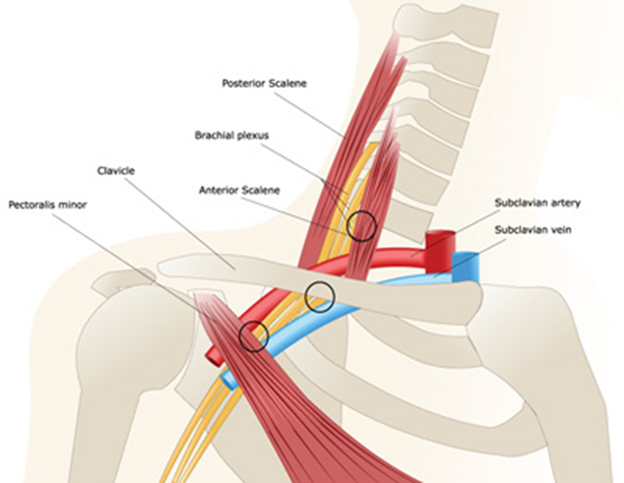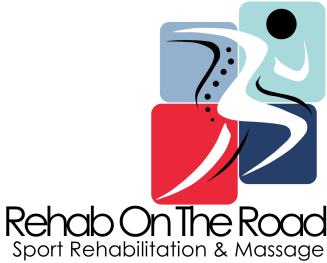Thoracic outlet syndrome is a term used to describe the compression of nerves and/or blood vessels which travel from the neck to the armpit. Compression of these structures can cause pain, tingling, numbness, and weakness from the neck and throughout the arm.
Symptoms
Symptoms vary depending on the exact location and structures being compressed, as well as the extent of the compression, but may include:
- Symptoms are made worse by overhead movements
- The arm may feel weak or easily fatigued
- Tingling or numbness in the arm
- Pain in the neck or shoulder
- A cold hand
Anatomy
The thoracic outlet is the gap between the clavicle (and the first rib. There are lots of nerves and blood vessels which run through this space, including the brachial plexus and subclavian artery and vein.
If the posture around the shoulder is not good, then the shoulder moves forwards, which lowers the collarbone. This can result in compression of the nerves and blood vessels underneath it.
Congenital anatomical variances can also make it more likely an individual will developing thoracic outlet syndrome.
Traumatic injuries to the clavicle such as fractured collarbone may also reduce the space, especially in cases of malunion.

Treatment
Treatment should aim to correct the cause of the compression and in most cases, this is poor posture, so the following will help.
Stretching
Stretching the chest muscles especially pectoralis minor and scalenes can be beneficial in improving posture of the upper back and shoulder girdle. It is very important to apply cold and compression to a contusion. Applying heat or deep massage in the acute stage may cause further injury or lead to myositis ossificans which is a bony growth within the muscle.
Sports Massage
Particularly trigger point therapy. Trigger points are tight localized knots or lumps in the muscles which cause back pain. Treatment is often part of a deep tissue massage and involves applying sustained pressure to the trigger point in the muscle.
Strengthening Exercises
for the Serratus anterior and lower trapezius muscle as well as scapula mobilisation. The serratus anterior anterior is known as the punching muscle.
Contact Me
Let's chat!
Need more information? Send me an email or drop me a line. I don’t bite!
- Charlotte@rehabontheroad.co.uk
- 07971448719

